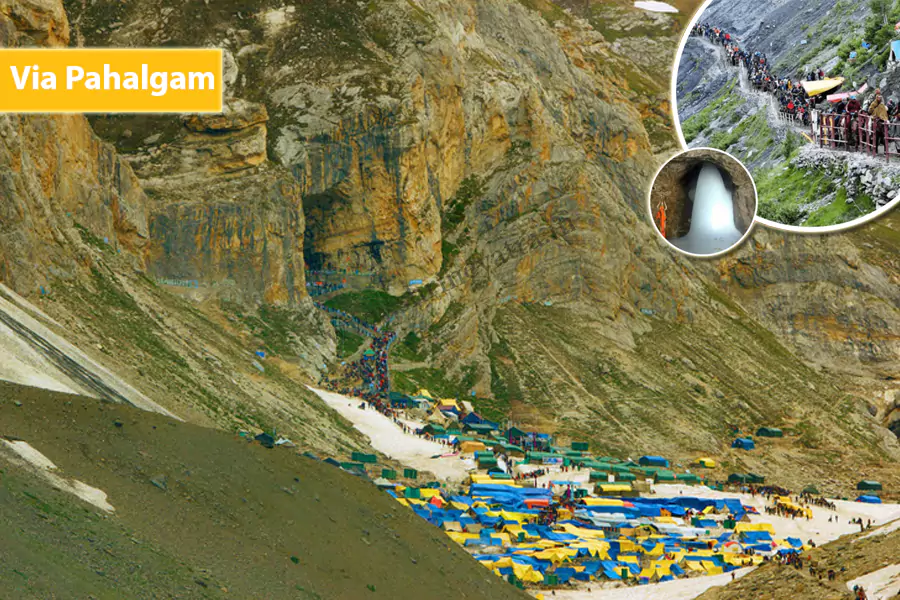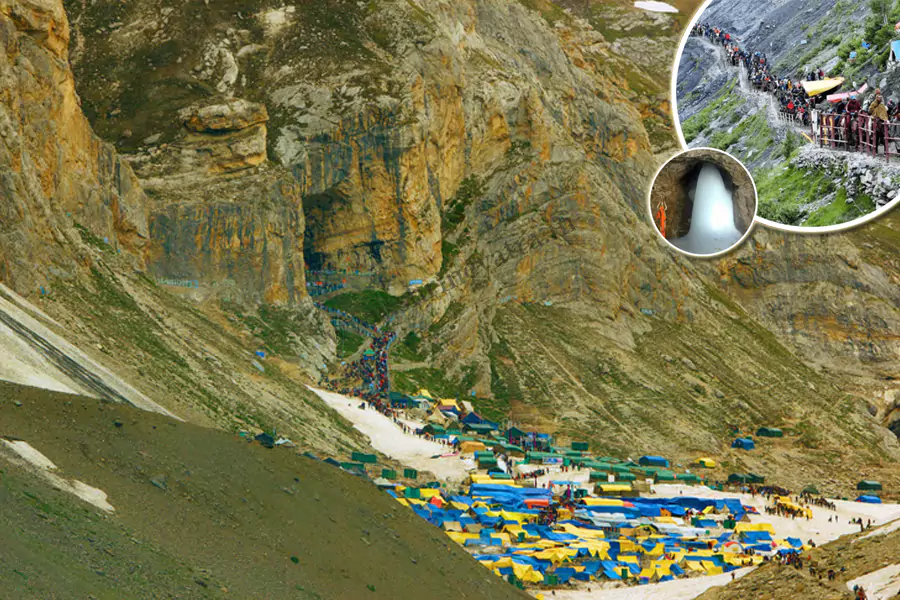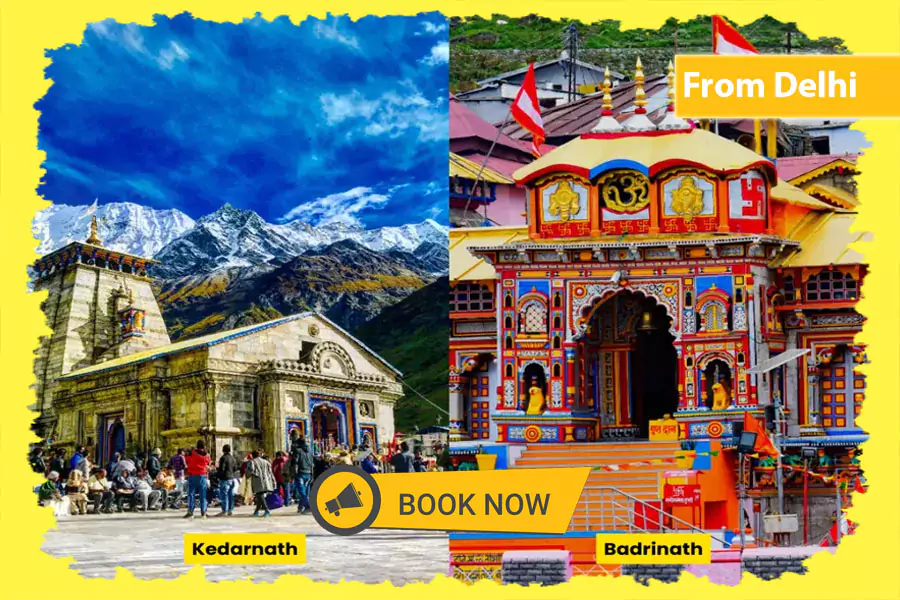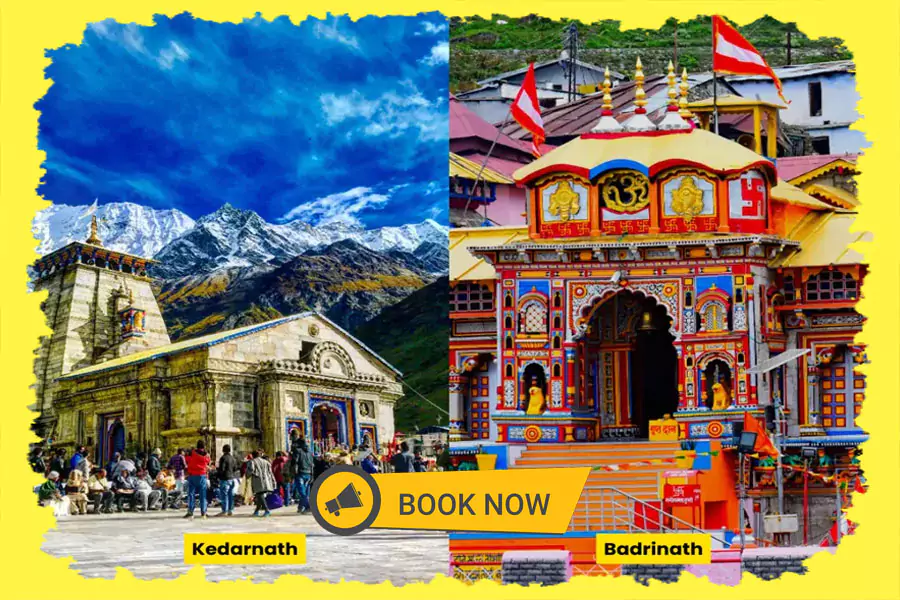
Your Ultimate Guide to the Amarnath Yatra Route: Step-by-Step Insights
The Amarnath Yatra is one of India’s most revered spiritual journeys, attracting thousands of devotees annually. Set in the enchanting landscapes of Jammu and Kashmir, this yatra, or pilgrimage, takes you on a path to Lord Shiva’s sacred cave, where the famous ice lingam resides. This guide offers you an in-depth view of every part of the Amarnath Yatra route, step-by-step, ensuring a meaningful, well-prepared journey.
Overview of the Amarnath Yatra Route
The Amarnath Yatra primarily follows two major trekking routes:
- Pahalgam Route: A traditional route that is considered safer and relatively easier for new trekkers.
- Baltal Route: A shorter, yet steeper path, ideal for experienced trekkers or those with limited time.
Preparation and Planning for the Amarnath Yatra
The journey to Amarnath Cave requires meticulous planning, from securing permits to arranging travel and accommodation. Here’s how to prepare for this journey:
Step 1: Registration and Permits
Each year, the Shri Amarnath Shrine Board (SASB) opens a registration period for yatris (pilgrims). Registrations are conducted through designated banks and online portals. Ensure you carry a valid medical certificate as it is mandatory for registration.
Step 2: Physical and Mental Readiness
The trek to the Amarnath Cave can be physically challenging due to the high altitude and unpredictable weather. It is advisable to begin physical preparation a few weeks before the yatra. Activities like walking, running, and breathing exercises can help acclimate your body to the strenuous journey ahead.
Step 3: Choosing the Right Route
Select the route best suited for you based on fitness level, available time, and previous trekking experience. The Pahalgam Route is longer and offers gradual acclimatization, while the Baltal Route is shorter but much steeper.
Route Details: Pahalgam Route to Amarnath Cave
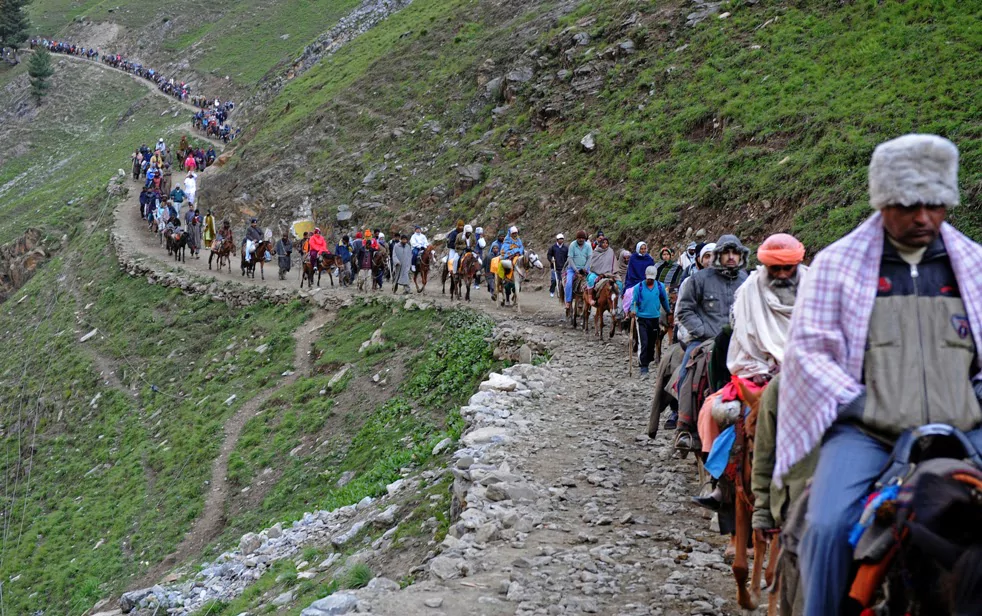
Day 1: Arrival in Pahalgam
The town of Pahalgam serves as the base camp for one of the primary routes to Amarnath. This beautiful town is surrounded by lush valleys, rivers, and pristine forests. Spend the night here to rest, adjust to the altitude, and prepare for the trek.
Day 2: Pahalgam to Chandanwari
From Pahalgam, the next stage involves a 16 km trek to Chandanwari. You can travel by car or on foot, depending on your preference and physical stamina. Chandanwari serves as the first checkpoint, with facilities for food, rest, and accommodation.
Day 3: Chandanwari to Sheshnag
This leg covers 13 km, ascending to Sheshnag Lake, known for its stunning glacial waters. At an elevation of 3,658 meters, the oxygen levels start to thin here, and it’s advisable to acclimate as much as possible. Sheshnag holds spiritual significance and offers serene landscapes that enhance the spiritual atmosphere of the yatra.
Day 4: Sheshnag to Panchtarni
The trek from Sheshnag to Panchtarni spans approximately 12 km. Panchtarni is the final stop before reaching the Amarnath Cave. The journey through Mahagunas Pass (4,267 meters) is challenging, with steeper climbs and colder temperatures. Overnight camping facilities are available here, allowing for one final night of rest before reaching the cave.
Day 5: Panchtarni to Amarnath Cave
This is the final 6 km stretch from Panchtarni to Amarnath Cave. The trek here is steep and requires a careful approach due to slippery terrain. Once at the cave, devotees can witness the naturally formed ice lingam symbolizing Lord Shiva, a sight that marks the pinnacle of the yatra. After the darshan (viewing), trekkers return to Panchtarni by evening.
Recommended package: Amarnath Yatra By Helicopter Via Pahalgam
Route Details: Baltal Route to Amarnath Cave
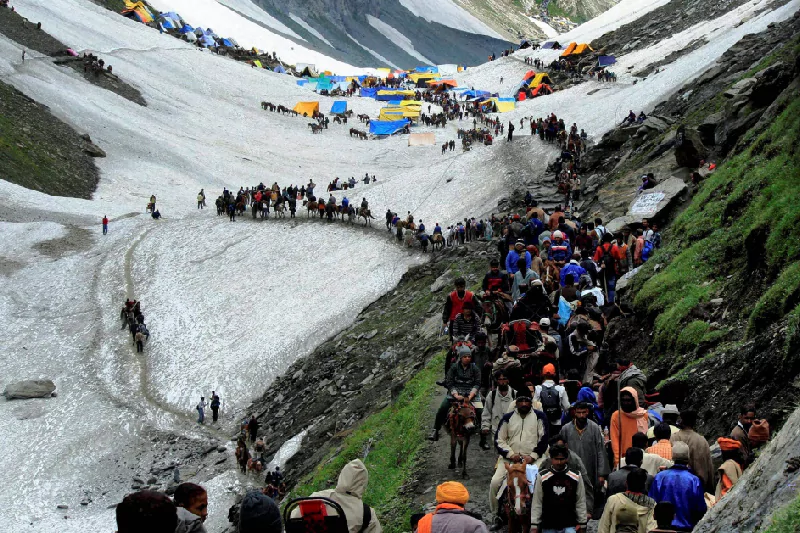
The Baltal Route is a shorter yet steeper path for those who wish to complete the yatra within a day. Starting from Baltal Base Camp, this route covers approximately 14 km and reaches the Amarnath Cave directly.
Key Highlights of the Baltal Route
- Short Duration: Ideal for experienced trekkers or those with limited time.
- Steep Terrain: The path is more challenging but offers a quick route to the cave.
- Helicopter Services: Available for those who wish to avoid trekking altogether, providing an aerial view of the stunning valley.
One-Day Itinerary for Baltal Route
- Early Morning: Depart from Baltal Base Camp on foot or horseback. The 6–7-hour trek covers rough terrains and scenic views of the mountains.
- Late Morning: Arrive at Amarnath Cave, where you can take in the serene, spiritual ambiance.
- Afternoon Return: Begin the descent back to Baltal, completing the yatra in a single day.
Recommended package: Amarnath Yatra By Helicopter Via Baltal
Alternative Travel Options: Helicopter Service
For those unable to trek or seeking a faster option, helicopter services operate between Baltal and Panchtarni. The helicopter significantly reduces travel time, making the yatra accessible for elderly and differently-abled devotees.
Here are the Complete Details about Amarnath Yatra Route.
Essential Tips for a Safe and Comfortable Yatra
Weather Preparedness
The weather in the Amarnath region can shift rapidly, with sudden rain and snowfall even in summer. Pack warm clothes, waterproof jackets, and sturdy shoes to handle these changes.
Health and Safety Tips
Altitude sickness is common along the yatra route. Carry essential medications, stay hydrated, and pace yourself to avoid exhaustion. First aid kits, energy snacks, and portable oxygen cylinders are recommended for all trekkers.
Food and Accommodation
The SASB provides langar (community kitchens) at various points along the route, offering free meals to yatris. Basic camping facilities are available at each checkpoint, including Sheshnag and Panchtarni.
Respecting the Environment
Amarnath is not only a sacred site but also an ecologically sensitive region. Dispose of waste responsibly, avoid using plastic, and follow designated paths to protect the natural landscape.
The Spiritual Significance of the Amarnath Yatra
The Amarnath Cave is believed to be the place where Lord Shiva disclosed the secrets of immortality to Goddess Parvati. The naturally occurring ice lingam is worshipped as a manifestation of Shiva’s presence, attracting devotees who seek divine blessings and spiritual enlightenment. This yatra is not just a trek; it’s a journey of faith, devotion, and self-discovery.
For those seeking both adventure and spiritual growth, the Amarnath Yatra offers a profound, unforgettable experience. Each step along the trail brings one closer to a sense of peace, both inward and outward. Prepare well, respect the journey, and embrace the powerful energy of the Himalayas.







